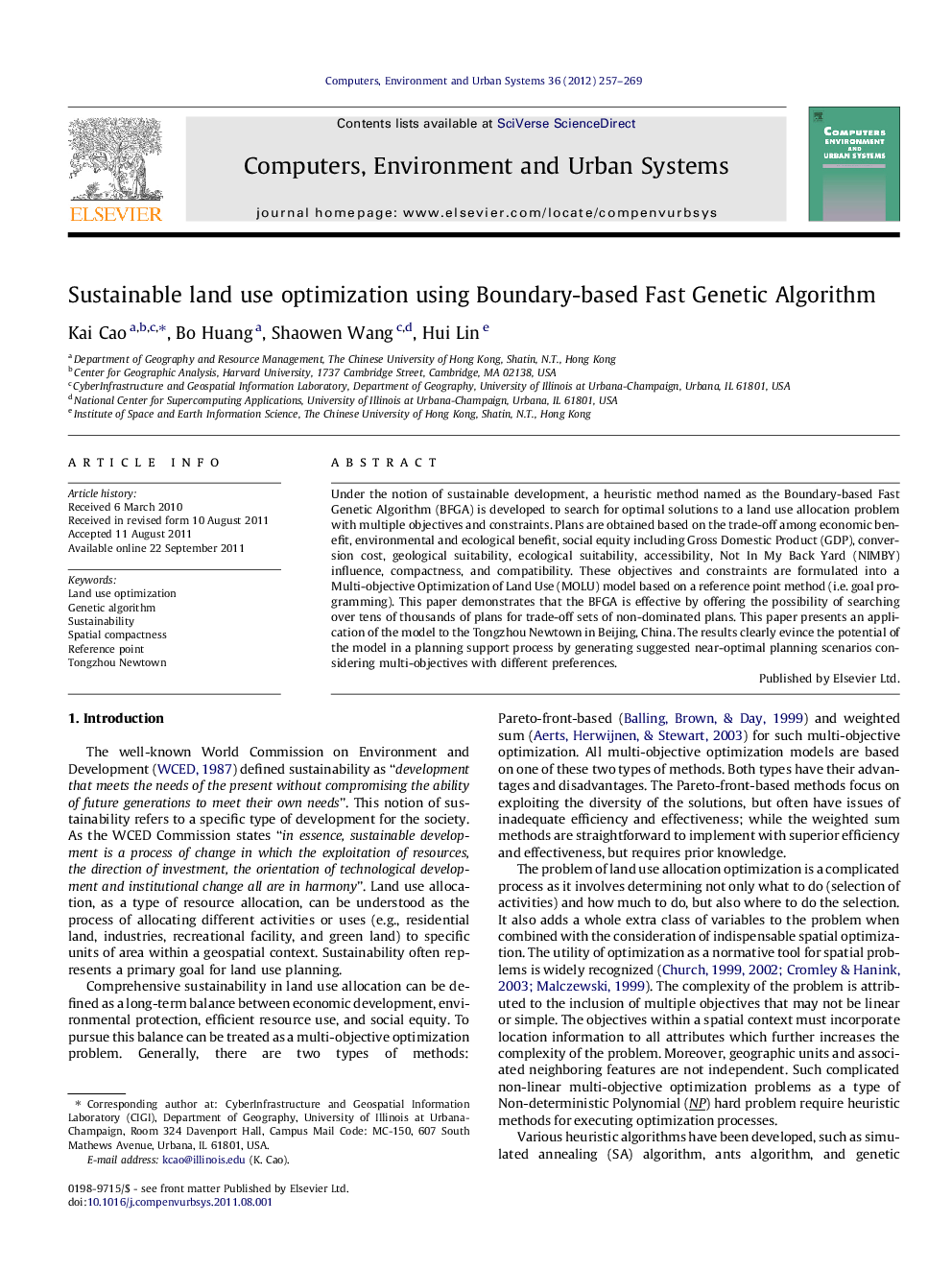| کد مقاله | کد نشریه | سال انتشار | مقاله انگلیسی | نسخه تمام متن |
|---|---|---|---|---|
| 506559 | 864922 | 2012 | 13 صفحه PDF | دانلود رایگان |

Under the notion of sustainable development, a heuristic method named as the Boundary-based Fast Genetic Algorithm (BFGA) is developed to search for optimal solutions to a land use allocation problem with multiple objectives and constraints. Plans are obtained based on the trade-off among economic benefit, environmental and ecological benefit, social equity including Gross Domestic Product (GDP), conversion cost, geological suitability, ecological suitability, accessibility, Not In My Back Yard (NIMBY) influence, compactness, and compatibility. These objectives and constraints are formulated into a Multi-objective Optimization of Land Use (MOLU) model based on a reference point method (i.e. goal programming). This paper demonstrates that the BFGA is effective by offering the possibility of searching over tens of thousands of plans for trade-off sets of non-dominated plans. This paper presents an application of the model to the Tongzhou Newtown in Beijing, China. The results clearly evince the potential of the model in a planning support process by generating suggested near-optimal planning scenarios considering multi-objectives with different preferences.
► In this research, in view of the three main elements of sustainability: economy, environment, and society, total eight objectives are considered: GDP, Conversion, Geomorphology and Geological Suitability, Ecological Suitability, Accessibility, NIMBY Influence, Compactness, as well as Compatibility.
► In this research, with regard to the review of other applications and the sustainablel and use planning support process, MOLU model is constructed with its characteristics of goal programming, interaction, normalization etc.
► Besides, an exhaustive evaluation of each objective and constraint for the further optimization process is also essential. In this research, all of these eight objectives are translated into quantified forms with reasonable and efficient evaluation models.
► As for these objectives themselves, Maximization of Accessibility, Maximization of Compactness, and Maximization of Compatibility (with some innovations) are integrated into the optimization model effectively. For the objective of accessibility, the decreasing function with GIS analysis is brought into the evaluation model, which shows better representation of the decreasing influence by different roads. With regard to the objective of compatibility, Pair-wise comparison method is employed in this research, which could decrease the subjectivity of simple DelPhi method.
► The design of the effective and efficient optimization model is also important especially for this spatial non-linear multi-objective optimization problem. This research uses GA with revised crossover and mutation operators, including CBO MPO, MBO and MCO operators, which is named as “BFGA”. The BFGA shows the improvement of both the effect and the efficiency than other existing models in similar research background and compatible research scale.
Journal: Computers, Environment and Urban Systems - Volume 36, Issue 3, May 2012, Pages 257–269